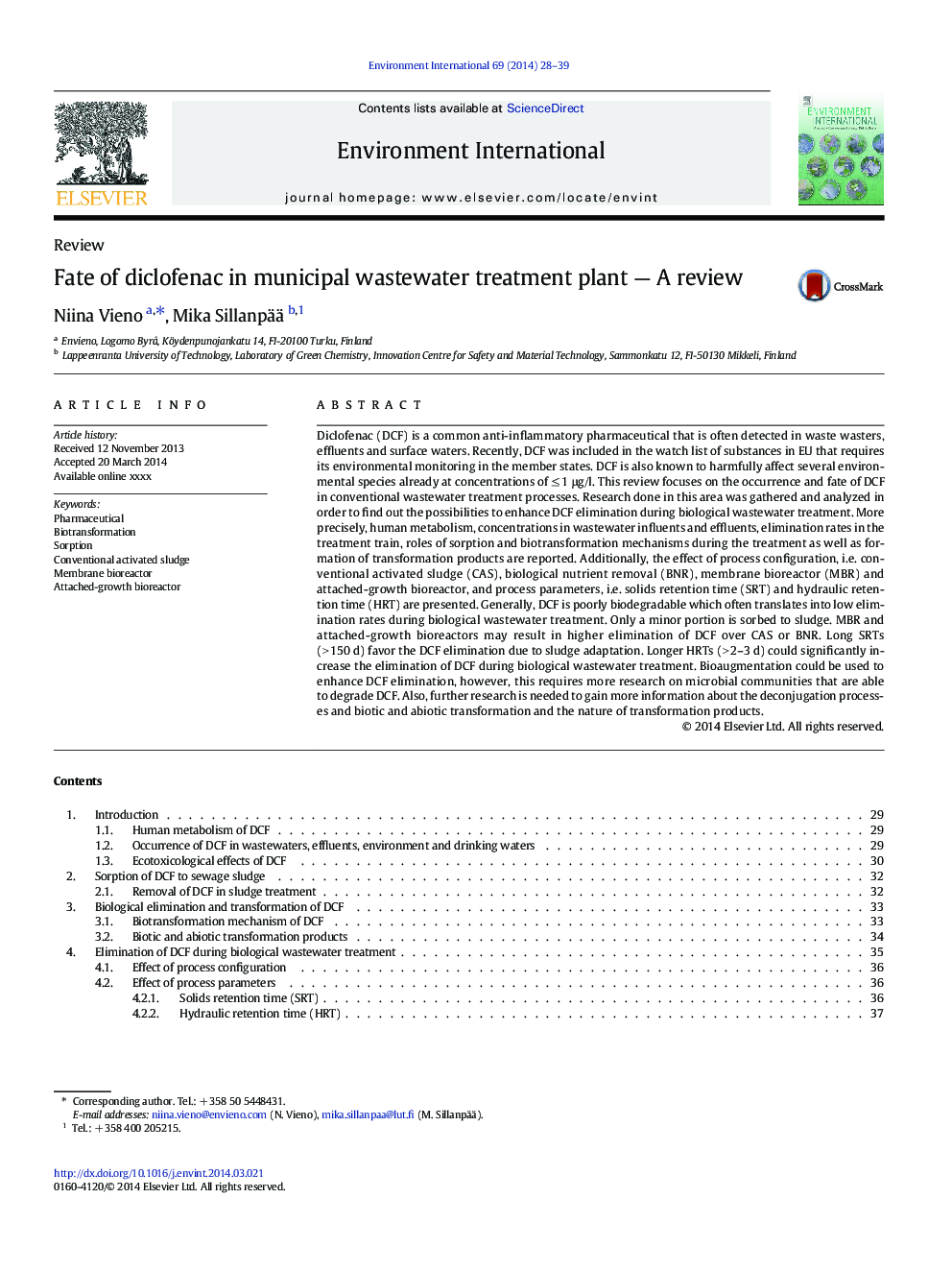| کد مقاله | کد نشریه | سال انتشار | مقاله انگلیسی | نسخه تمام متن |
|---|---|---|---|---|
| 6313951 | 1619059 | 2014 | 12 صفحه PDF | دانلود رایگان |
عنوان انگلیسی مقاله ISI
Fate of diclofenac in municipal wastewater treatment plant - A review
ترجمه فارسی عنوان
سرنوشت دیکلوفناک در کارخانه تصفیه خانه های شهری - بررسی
دانلود مقاله + سفارش ترجمه
دانلود مقاله ISI انگلیسی
رایگان برای ایرانیان
کلمات کلیدی
دارویی، تبدیل بیوتکنولوژی، جذب، لجن فعال معمولی، بیوراکتور غشایی، رشد بیوراکتور رشد،
موضوعات مرتبط
علوم زیستی و بیوفناوری
علوم محیط زیست
شیمی زیست محیطی
چکیده انگلیسی
Diclofenac (DCF) is a common anti-inflammatory pharmaceutical that is often detected in waste wasters, effluents and surface waters. Recently, DCF was included in the watch list of substances in EU that requires its environmental monitoring in the member states. DCF is also known to harmfully affect several environmental species already at concentrations of â¤Â 1 μg/l. This review focuses on the occurrence and fate of DCF in conventional wastewater treatment processes. Research done in this area was gathered and analyzed in order to find out the possibilities to enhance DCF elimination during biological wastewater treatment. More precisely, human metabolism, concentrations in wastewater influents and effluents, elimination rates in the treatment train, roles of sorption and biotransformation mechanisms during the treatment as well as formation of transformation products are reported. Additionally, the effect of process configuration, i.e. conventional activated sludge (CAS), biological nutrient removal (BNR), membrane bioreactor (MBR) and attached-growth bioreactor, and process parameters, i.e. solids retention time (SRT) and hydraulic retention time (HRT) are presented. Generally, DCF is poorly biodegradable which often translates into low elimination rates during biological wastewater treatment. Only a minor portion is sorbed to sludge. MBR and attached-growth bioreactors may result in higher elimination of DCF over CAS or BNR. Long SRTs (> 150 d) favor the DCF elimination due to sludge adaptation. Longer HRTs (> 2-3 d) could significantly increase the elimination of DCF during biological wastewater treatment. Bioaugmentation could be used to enhance DCF elimination, however, this requires more research on microbial communities that are able to degrade DCF. Also, further research is needed to gain more information about the deconjugation processes and biotic and abiotic transformation and the nature of transformation products.
ناشر
Database: Elsevier - ScienceDirect (ساینس دایرکت)
Journal: Environment International - Volume 69, August 2014, Pages 28-39
Journal: Environment International - Volume 69, August 2014, Pages 28-39
نویسندگان
Niina Vieno, Mika Sillanpää,
